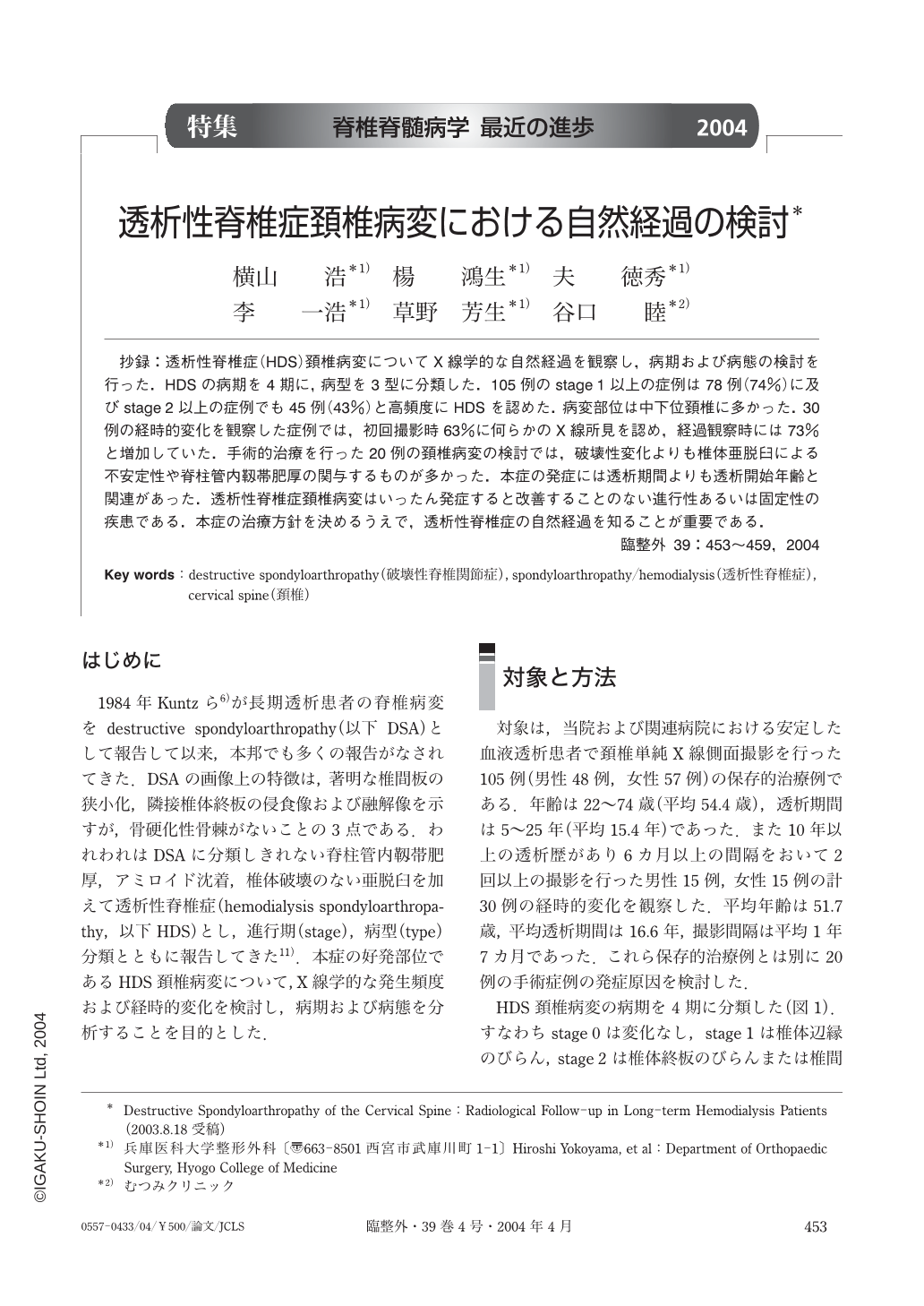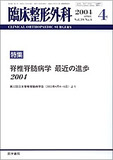Japanese
English
- 有料閲覧
- Abstract 文献概要
- 1ページ目 Look Inside
抄録:透析性脊椎症(HDS)頚椎病変についてX線学的な自然経過を観察し,病期および病態の検討を行った.HDSの病期を4期に,病型を3型に分類した.105例のstage 1以上の症例は78例(74%)に及びstage 2以上の症例でも45例(43%)と高頻度にHDSを認めた.病変部位は中下位頚椎に多かった.30例の経時的変化を観察した症例では,初回撮影時63%に何らかのX線所見を認め,経過観察時には73%と増加していた.手術的治療を行った20例の頚椎病変の検討では,破壊性変化よりも椎体亜脱臼による不安定性や脊柱管内靱帯肥厚の関与するものが多かった.本症の発症には透析期間よりも透析開始年齢と関連があった.透析性脊椎症頚椎病変はいったん発症すると改善することのない進行性あるいは固定性の疾患である.本症の治療方針を決めるうえで,透析性脊椎症の自然経過を知ることが重要である.
We investigated changes in radiographs of the cervical spine lesion in hemodialysis spondyloarthropathy (HDS) and identified the stage and the pathology of the cervical spine lesions in HDS. The subjects were 105 patients with HDS who had been treated conservatively , 48 males and 57 females. We classified the pathological phase of HDS into 4 stages and the type of pathology in HDS into 3 types:destructive kyphosis (type A), subluxation (type B) and hypertrophied ligament or extra amyloid deposits (type C). Among 105 patients, stage 1 or more were found in 77 patients (74%), and stage 2 or more in 45 patients (43%). HDS predominantly occurred in the middle and lower cervical spines. All patients had disease progression in relation to the stages after HDS occurred. Consequently, 20 patients eventually required surgery due to the development of the staging. We found that cervical myelopathy of patients with HDS were elicited from vertebral subluxation and spinal canal hypertrophied ligament. In order to make the correct decision of surgery, it is important to evaluate the lesion by using staging and typing system based on radiological findings.

Copyright © 2004, Igaku-Shoin Ltd. All rights reserved.


